About Curcumin
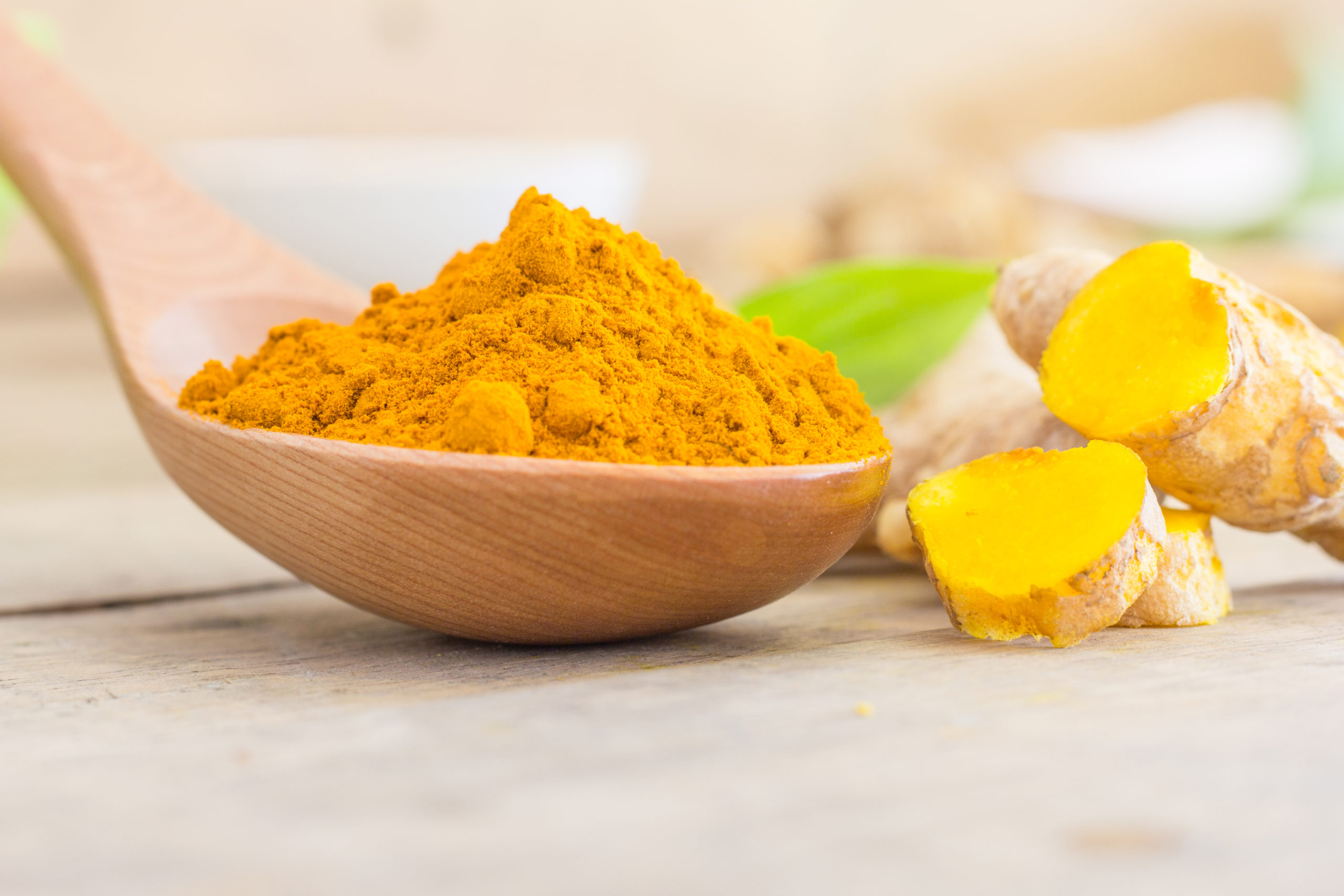
Curcumin is the principal component of turmeric (Curcuma longa L., Zingiberaceae), a curry spice used as an edible component through different parts of Asia, mainly for its flavor and color profile and less so for its medicinal properties. It is cultivated mainly in India, China, Indonesia, Jamaica, and Peru. The medicinal usage for curcumin has been known for thousand of years, especially by Ayurvedic therapy for inflammatory disorders, stomach disorders, health tonic, skin diseases and respiratory illnesses.
Current studies show that curcumin has been clinically proven to be anti-inflammatory, antioxidant, antimicrobial, hepatoprotective, cardioprotective and thrombosuppresive. It is a wonderful highly pleiotropic molecule with numerous targets and mechanisms of action. Scientific research shows that curcumin has properties that alter the activity of enzymes, growth factor receptors, cofactors, and other molecules.
However, ingesting raw turmeric by itself does not lead to the associated health benefits due to its poor bioavailability. It is primarily due to poor absorption, rapid metabolism, and rapid elimination in the liver and intestinal wall. It is not water soluble and needs fats and/or pepper extracts to increase its bioavailability or uptake at the small intestine.
With the help of piperine, (black pepper extract), a known inhibitor of hepatic and intestinal glucuronidation, the bioavailability of curcumin in rats and healthy human volunteers was significantly increased by 2000%!
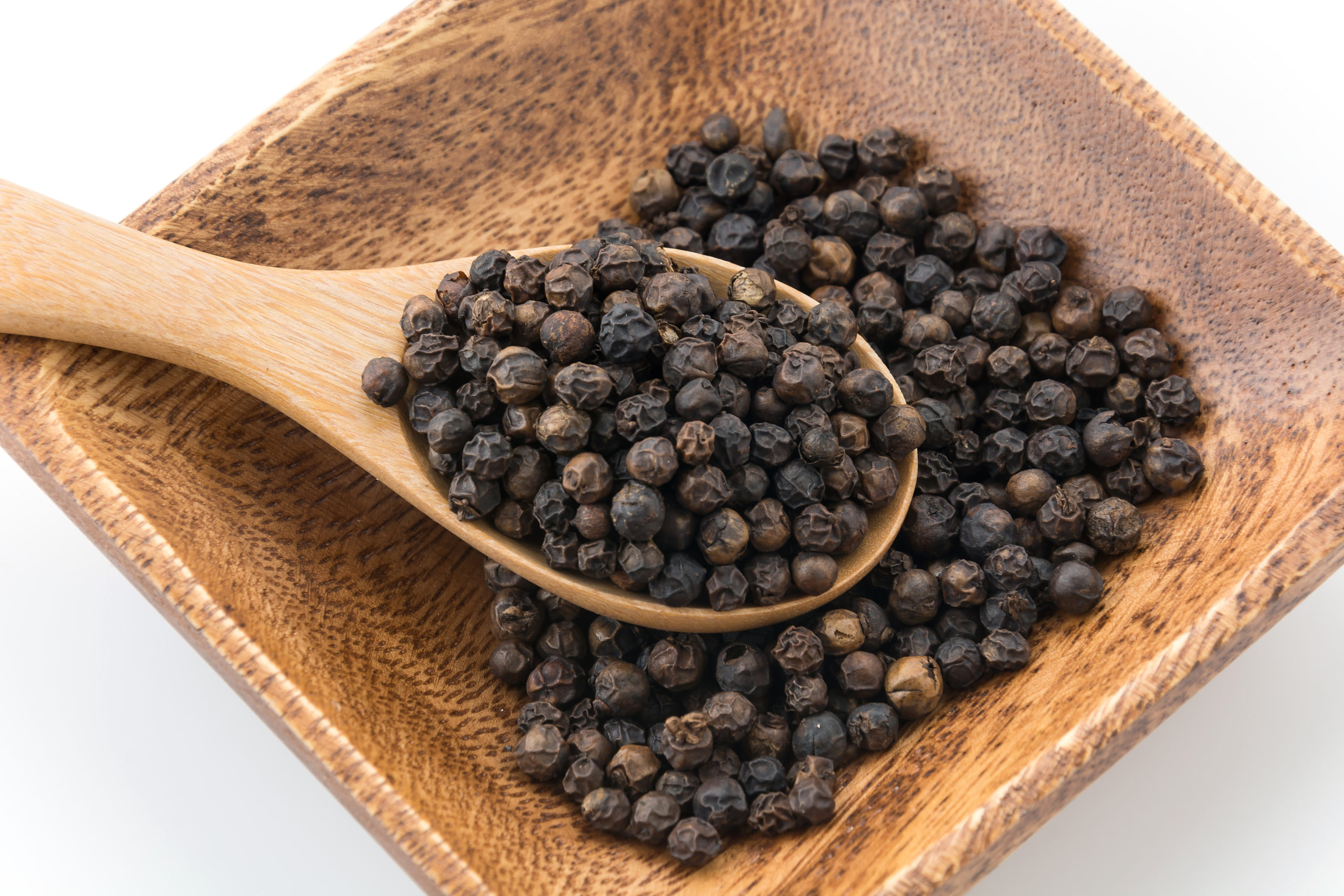
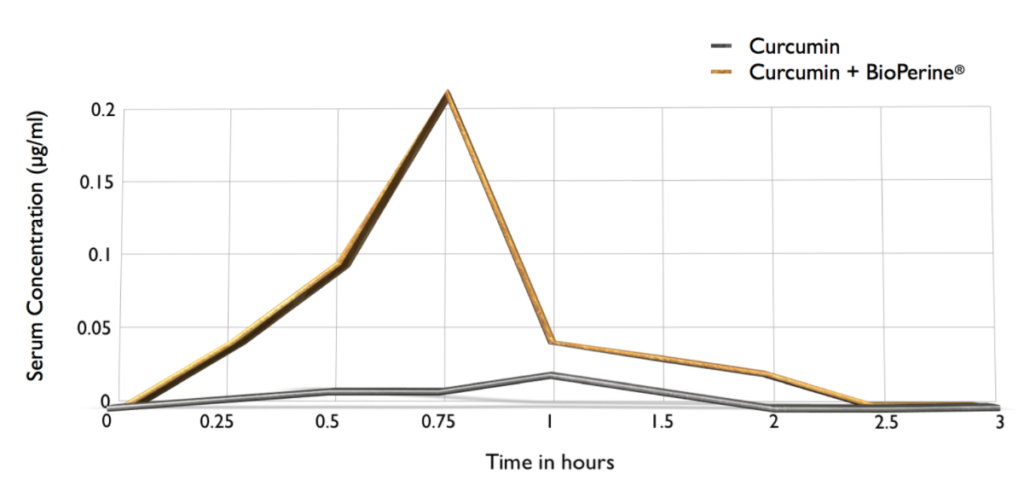
Bioavailability of Curcumin (2000 mg) when co – administered with BioPerine® (20 mg) was enhanced by 20 – fold or 2000% compared to bioavailability of curcumin alone at doses that were devoid of adverse side effects.
Being a pleiotropic molecule, curcumin has myriads mechanisms of action and functions. The three key functions are as an anti-oxidant, anti-inflammatory and also acts a arthritis treatment.
Anti-oxidant
Curcumin has been shown to improve systemic markers of oxidative stress by neutralizing free radical particles. It works by few pathways, one is them is by scavenging free radicals such as reactive oxygen and nitrogen species (ROS and RNS, respectively). A recent systematic review and meta-analysis of randomized control data related to the efficacy of supplementation with purified curcuminoids on oxidative stress parameters—indicated a significant effect of curcuminoids supplementation on all investigated parameters of oxidative stress including plasma activities of SOD and catalase, as well as serum concentrations of glutathione peroxidase (GSH) and lipid peroxides.
Anti-inflammatory
An increasing body of evidence shows that chronic inflammation causes and advances many common diseases. These diseases include Alzheimer’s disease (AD), Parkinson’s disease, multiple sclerosis, epilepsy, cerebral injury, cardiovascular disease, metabolic syndrome, cancer, allergy, asthma, bronchitis, colitis, arthritis, renal ischemia, psoriasis, diabetes, obesity, depression and fatigue. This opens new possibilities for treatment and therapy by blocking the inflammatory processes.
Tumour necrosis factor α (TNF-α) is a major mediator of inflammation in most diseases, and this effect is regulated by the activation of a transcription factor, nuclear factor (NF)-κB. Whereas TNF-α is said to be the most potent NF-κB activator, the expression of TNF-α is also regulated by NF-κB. In addition to TNF-α, NF-κB is also activated by most inflammatory cytokines; gram-negative bacteria; various disease-causing viruses; environmental pollutants; chemical, physical, mechanical, and psychological stress; high glucose; fatty acids; ultraviolet radiation; cigarette smoke; and other disease-causing factors. Therefore, agents that downregulate NF-κB and NF-κB–regulated gene products have potential efficacy against several of these diseases.
Studies have shown that curcumin can block NF-κB activation increased by several different inflammatory stimuli. There are also other mechanisms of action which thereby supporting its function as a potential anti-inflammatory agent.
Arthritis
One such disease associated with inflammation, both chronic and acute, is osteoarthritis (OA), a chronic joint condition. It affects over 250 million people worldwide, leading to increased healthcare costs, impairment in activities of daily living (ADL), and ultimately decreased quality of life.
Several studies have shown the anti-arthritic effects of curcumin in humans with OA and rheumatoid arthritis (RA). Subjects in a particular OA study were randomly assigned to receive either curcuminoid (500 mg/day in three divided doses; n = 19) with 5 mg piperine added to each 500-mg dose or a matched placebo (n = 21) for six weeks. There were significantly greater reductions in the pain scale and increase functional score.
There are other studies that show that curcumin works specifically to reduce local inflammatory markers in the synovial fluid rather than systemically. Therefore, they suggest that is more plausible that the beneficial effects of curcuminoids in OA are because of local anti-inflammatory effects rather than systemic effects.
A separate study was done to be the advantage effects of concurrent supplementation of curcumin together with OA’s standard treatment. In a longer (eight months) randomized control trial, 50 subjects diagnosed with OA were assigned to receive either standard treatment as prescribed by their physician or standard treatment plus two 500-mg tablets daily consisting of a natural curcuminoid mixture, physical function and stiffness scores decreased significantly in the treatment group compared to the control. In addition, the treatment group showed significant decreases in all markers of inflammation (soluble CD40 ligand(sCD40L), interleukin 1 beta (IL-1β), interleukin 6 (IL-6) compared to the beginning.
For OA patients that could not tolerate NSAIDs due to its gastrointestinal side effect, one particular study done on 139 shows comparable effects between study group that took 500mg of curcumin three times daily versus another group that took 50mg of diclofenac daily. After 28days, it is assessed that the group who took diclofenac shows significantly more side effects such as flatulence and gastritis (38% vs 13%). Curcumin group’s pain score also decreases with time, this shows that curcumin can be an alternative treatment option in the patients with knee OA who are intolerant to the side effects of non-steroidal anti-inflammatory drugs.
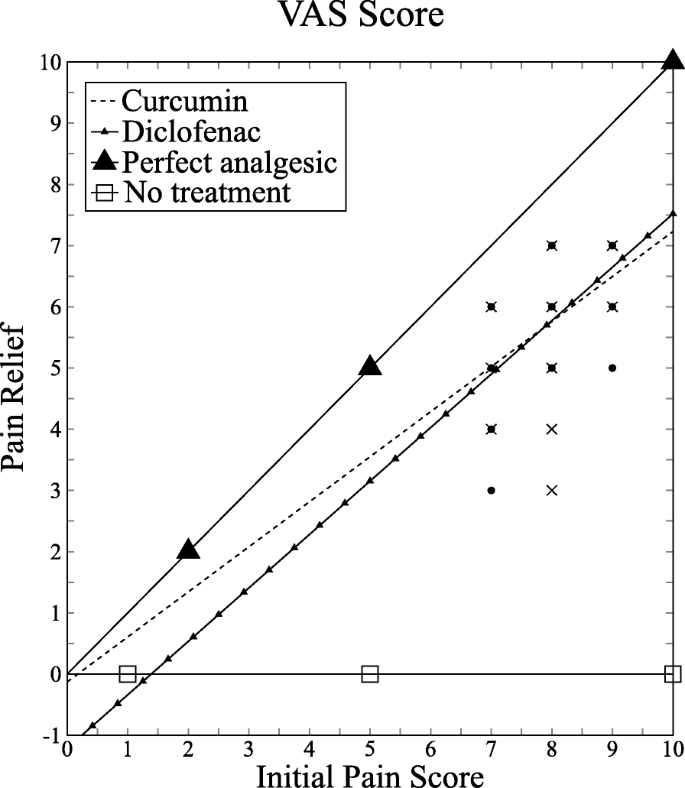
Visual analogue scale (VAS) plot: Relationship between pain relief measured by subtraction and initial pain score for curcumin and diclofenac. Correlation coefficients: curcumin, 0.5; diclofenac, 0.73
Both curcumin and piperine are classified as GRAS (generally recognized as safe) by The United States Food and Drug Administration and there is no set limit for dosage. Curcuminoids has good tolerability and safety profiles have been shown by clinical trials, even at doses between 4000 and 8000 mg/day.
In conclusion, curcumin has received worldwide attention for its multiple health benefits, which appear to act primarily through its anti-oxidant and anti-inflammatory mechanisms. Our society today are starting to look at natural remedies that can improve their health with minimal to none side effects and curcumin can be one of them. Research suggests that curcumin can help in the management of oxidative and inflammatory conditions, metabolic syndrome, arthritis, anxiety, and hyperlipidemia. It may also help in the management of exercise-induced inflammation and muscle soreness, thus enhancing recovery and subsequent performance in active people. In addition, a relatively low dose can provide health benefits for people that do not have diagnosed health conditions.
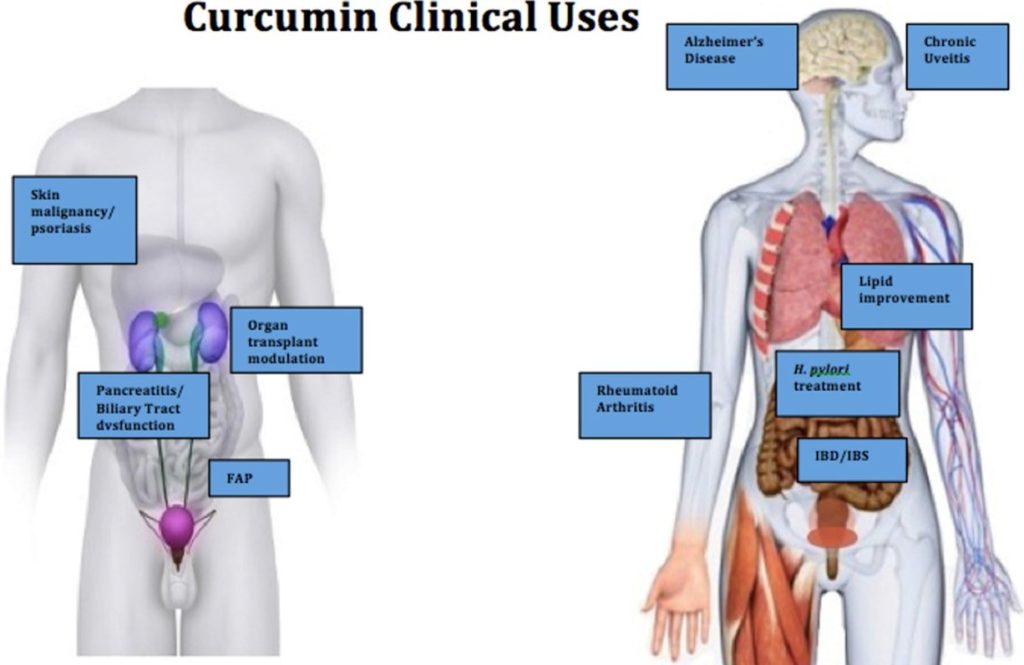
Reference
- Yeung AWK, Horbańczuk M, Tzvetkov NT, et al. Curcumin: Total-Scale Analysis of the Scientific Literature. Molecules. 2019;24(7):1393. Published 2019 Apr 9. doi:10.3390/molecules24071393
- A. Goel, A.B. Kunnumakkara, B.B. Aggarwal. Curcumin as “Curecumin”: from kitchen to clinic Biochem Pharmacol (2007), 10.1016/j.bcp.2007.08.016
- Shoba G, Joy D, Joseph T, Majeed M, Rajendran R, Srinivas PS. Influence of piperine on the pharmacokinetics of curcumin in animals and human volunteers. Planta Med. 1998 May;64(4):353-6. doi: 10.1055/s-2006-957450. PMID: 9619120.
- Hewlings SJ, Kalman DS. Curcumin: A Review of Its Effects on Human Health. Foods. 2017;6(10):92. Published 2017 Oct 22. doi:10.3390/foods6100092
- Hunter P. The inflammation theory of disease. The growing realization that chronic inflammation is crucial in many diseases opens new avenues for treatment. EMBO Rep. 2012;13(11):968-970. doi:10.1038/embor.2012.142
- Shep D, Khanwelkar C, Gade P, Karad S. Safety and efficacy of curcumin versus diclofenac in knee osteoarthritis: a randomized open-label parallel-arm study. Trials. 2019;20(1):214. Published 2019 Apr 11. doi:10.1186/s13063-019-3327-2
